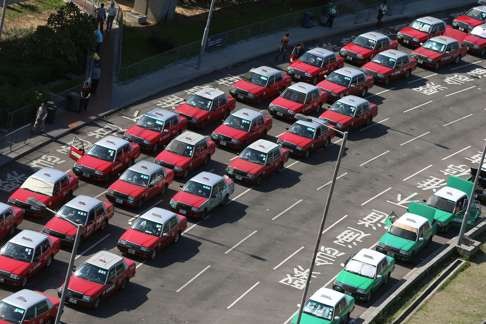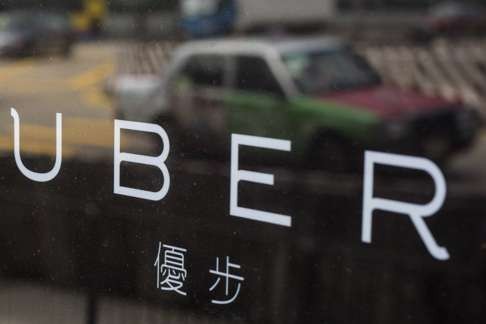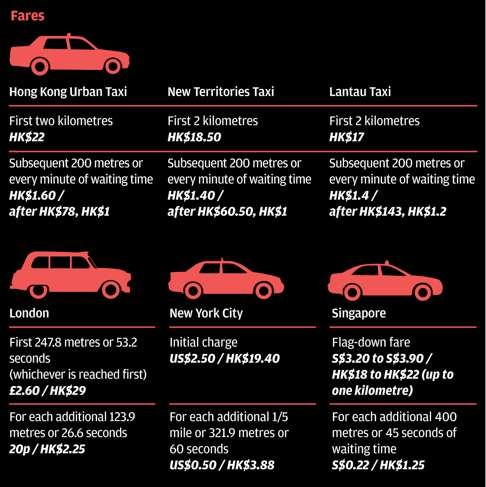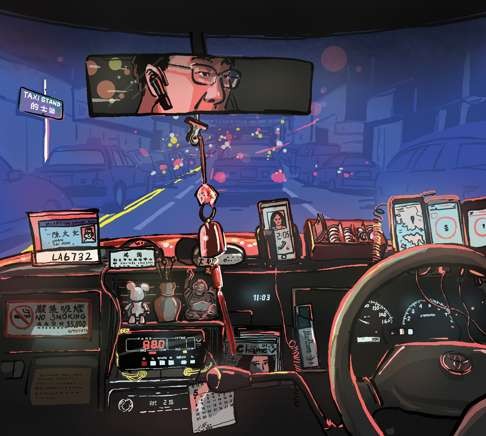
Image overdrive: how Hong Kong cabbies are taking on Uber with their own taxi-hailing app
With complaints by passengers in the city soaring, the industry is trying to make up lost ground by signing hundreds of drivers to a ‘performance pledge’
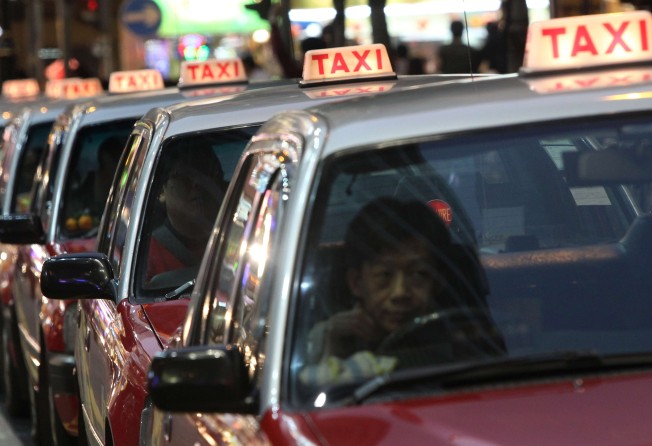
Taxi drivers in Hong Kong are on a mission to rehabilitate their image with a new taxi-hailing app.
The launch of TAXI this week — developed by taxi owners and drivers at the Taxi Council — marks the traditional taxi industry’s attempt to reclaim some of the ground it has lost to competitors such as the American multinational Uber.
TAXI claims to offer a superior user experience by referring customers to endorsed taxi drivers who must sign up to a “performance pledge”.
It has so far managed to sign up 800 drivers registered as endorsed drivers in the city, but hopes to boost this to 1,500 drivers, along with a further 3,500 independent drivers, within a month.
Over the years, the city’s taxi drivers have developed a negative reputation. Last year, official figures obtained by the SCMPfound there had been a surge in complaints against cabbies.
Quarrels often focused on drivers refusing a hire, overcharging their passengers or not taking them to their destination by the most direct route. These three complaints rose fivefold in 11 years, according to figures compiled by the Hong Kong government’s Transport Complaints Unit.
The trend of increasing malpractice was revealed despite the number of taxi driver licences being frozen since 1994 in order to protect the industry.
Between 2003 and 2015, there were more than 93,000 registered complaints — but officials said the true figure could be significantly higher.
In a notorious overcharging incident in October 2015, a Swiss tourist was made to pay HK$8,000 for a trip from Hong Kong airport to a hotel in Hung Hom — about 30 times the usual fare for the 30km trip.
At the time, police investigating the crime said it was the worst such incident on record in the city.
But even when fares are fair, Hong Kong’s taxi system can appear confusing, with tourists in particular often left mystified by the rules they adhere to.
Meanwhile, taxi drivers are lobbying the government for the right to increase their fares as the competition from cab-hailing apps intensifies.
Taxi groups in urban areas, the New Territories and Lantau are particularly keen to acquire permission to charge more in traffic jams under an application submitted in April. They say an increase in the number of cars on Hong Kong’s road has led to worsening congestion, meaning they are losing out on possible income.
The changes, if approved, would result in drivers being allowed to charge extra for every 45 seconds they are stationary rather than one minute.
The controversial move would follow fare increases in 2013, which saw a 10 per cent rise for every 200 metres travelled.
The proposals come amid the rise in popularity of Hong Kong’s taxi-hailing apps, which have seen taxi users grow to rely on GPS tracking and online payments.
WHAT TO TAKE: UBER OR CABS?
Uber is a ride-hailing app that has courted controversy since its launch in Hong Kong two years ago. Acting as a referral system, it connects passengers with drivers using their phones’ GPS, allowing them to track each other’s location – so passengers can see when their lift will arrive.
It launched in the city with its luxury Black service, before introducing UberX, a low-cost service, in December. With a HK$30 minimum fare, UberX charges HK$6 per kilometre and HK$1 for every minute of the ride. Uber processes payments, which are made automatically through the app and are split 25/75 between the company and the driver respectively.
For users needing a longer ride, UberX is cheaper than regular taxis in Hong Kong. Local taxis have a base fare of HK$22 for the first 2km and charge HK$1.6 for every 200 metres. They also charge HK$1.6 for every minute spent waiting, which becomes HK$1 after the fare passes HK$78.
Uber has drawn criticism from taxi operators for disrupting the market, resulting in protests and government crackdowns. The legality of its services have been called into question, sparking various court cases.
In August, police raided an Uber office. Seven Uber drivers were arrested and charged with driving without third-party insurance and using a car for hire without a permit.
As apps like Uber become more popular among Hongkongers, the taxi industry has called for stricter regulation of the services, as well as looking for ways to innovate and remain competitive.
BASIC FACTS AND STATISTICS
■ There are 18,138 taxis in Hong Kong:
15,250 urban (red) taxis
2,838 are New Territories (green) taxis
50 Lantau (blue) taxis
■ Hong Kong taxis transport about one million passengers per day
■ Red urban taxis are the most ubiquitous across the city, as they operate in most areas of Hong Kong (except Tung Chung Road and roads in south Lantau). However, they are mostly concentrated in Kowloon and Hong Kong island.
■ Green New Territories taxis can be found in the north-eastern and north-western parts of the New Territories.
■ Blue Lantau taxis operate in Lantau and Chek Lap Kok only.
■ All three types of taxis can be found at the passenger terminals at Hong Kong International Airport and Hong Kong Disneyland.
■ More than 95 per cent of taxis in Hong Kong are Toyota Comforts. Other models include Toyota Prius, Nissan NV200s, Ford Transit Connects and BYD e6s
■ Only three taxis in Hong Kong are fully electric.
■ The average vehicle age is 10 years.
■ Seating capacity ranges from four to five passengers
COMPLAINTS
■ Taxi drivers should not, without a reasonable excuse, refuse to accept a hire or drive to any place indicated by a passenger. If passengers wish to file a complaint, the Transport Department recommends passengers mark down the taxi registration number or information on the Taxi Driver Identity Plate – located on the front dashboard – and bring it to the attention of the Transport Complaint Unit.
■ Last year, there were 10,359 complaints made against taxi services – slightly more than 2014’s figure of 10,060.
Source: Transport Complaints Unit
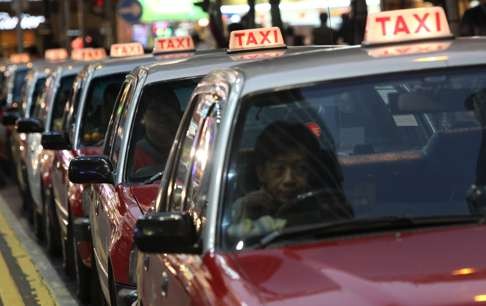
QUICK, QUIRKY FACTS ABOUT HONG KONG TAXIS
■ Passengers may not realise where they’re standing can mean the difference between getting a taxi and standing there for quite a while, stamping your feet in frustration. If there’s a yellow line next to the curb, taxis can only drop-off and pick-up passengers at a specific time – although most taxis overlook this rule
■ If there’s a double yellow line next to the curb, the taxi cannot pick you up from there at any time – most taxis strictly observe this rule
■ Taxis can also be hired from one of more than 400 taxi stands across the city. However, passengers should check the signage at taxi stands to distinguish between taxis that are going across the harbour, and those that are not.
■ Passengers may have noticed certain taxis drive with their “for hire” light on on the roof, but have the “for hire” sign on the dashboard covered with an “out of service” sign. This means the taxi is going across the harbour only. If they taxi is truly out of service, the “for hire” lights would be off.
Have cash on hand as few taxis accept credit cards or Octopus cards. Also, a driver can refuse to provide change for HK$500 and HK$1,000 notes.
■ Tipping is not required, but it’s not unusual for drivers to round fares to the nearest dollar, pocketing the extra cents.
FARES
■ Fare Table – Urban Taxi
First two kilometres: $22
Subsequent 200 metres or every one minute of waiting time: HK$1.60 / after HK$78, HK$1
Additional Charges
Baggage and prams (Except light personal hand baggage carried inside passenger compartment): $5 per piece
Wheelchairs and crutches carried by disabled passengers: Free
Animals or birds: HK$5 each
Hiring arranged through telephone booking: HK$5
Charges for using Toll Tunnel, Toll Road or Toll Area
Cross-Harbour Tunnel: HK$10 + return toll
Eastern Harbour Crossing: HK$25 + return toll
Western Harbour Crossing: HK$55 + return toll
The return toll is not payable by passenger if: the taxi was hired from a cross-harbour taxi stand; or
the final destination is not on the opposite side of the harbour.
Lantau Link: HK$30
Other toll tunnel, toll road or toll area: whatever toll was paid by the driver will be added to final fare
■ Fare Table – New Territories Taxi
First 2 kilometres: HK$18.50
Subsequent 200 metres or every one minute of waiting time: HK$1.40 / after HK$60.50, HK$1
Additional Charges
Baggage and prams (except light personal hand baggage carried inside passenger compartment):
HK$5 per piece
Wheelchairs and crutches carried by disabled passengers: Free
Animals or birds: HK$5 each
Hiring arranged through telephone booking: HK$5
Charges for using toll tunnel, toll road or toll area
Lantau Link: HK$30
Other toll tunnel, toll road or toll area: whatever toll was paid by the driver will be added to final fare
■ Fare Table – Lantau Taxi
First 2 kilometres: HK$17
Subsequent 200 metres or every one minute of waiting time: HK$1.4 / after HK$143, HK$1.2
Additional Charges
Baggage and prams (except light personal hand baggage carried inside passenger compartment): $5 per piece
Wheelchairs and crutches carried by disabled passengers: Free
Animals or birds: HK$5 each
Hiring arranged through telephone booking: HK$5
